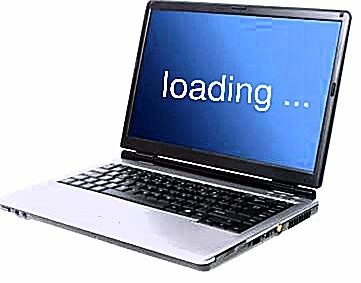Windows 10 Computer Slow
There are many different reasons why your computer can be slowing, but how do you fix your slowing? We've figured out the best ways to troubleshoot your slowing Computer and make your slow computer fast again in the process. These tips focuses on Windows 10 Operating System, however the tips can be applied to other Microsoft Windows Operating System with little variations in the steps.

Photos by Pixabay
Computer is slow Windows 10: From HDD to SSD
One of the biggest reason why an older computer is so slow is because your computer may still use an HDD (hard disk drive) as a storage for your Windows Operating System (OS). An HDD is very slow storage drive compared to the speeds that an SSD has. Nowadays, working on an HDD is no longer doable. Daily tasks such as moving files, opening programs and starting up computers are far too slow with an HDD. There’s a big chance that your Windows 10 computer is slow, because of the HDD.
Switching from an HDD to an SSD can be very easy, provided you have some experience with computers. If you are new to this area, there are thousands of guides on the internet regarding switching to an SSD. If you don't dare to get started with your computer yourself (understandable), fortunately there are plenty of computer experts that can do it for you.
It is often possible to purchase an SSD from a computer store, and as an extra service they can install the SSD (labor costs are charged extra). Handy tip that I can give you is to buy the SSD yourself. Then you only pay the labor costs, while you can buy an SSD cheaper elsewhere.
Fortunately, you don't have to throw away your ''old'' HDD. The HDD can still be used as an extra storage on the system. You can control your system through an SSD and store other files and programs on the HDD.

Computer Slow Windows 10: Are you using an HDD or SS?
It may be that you really have no idea whether you are using an HDD or SSD. I'll show you how to find out here! You have two ways to find out if you're using an HDD or SSD. The two ways are ''via Defragment Disk'' and ''Powershell''.
Disk defragment method
Step 1: Hold down the Windows key and R key.
Step 2: Type in the search bar (DFRGUI) and click OK.
Step 3: A menu will now open on your screen, called ''Optimize Stations''.
Step 4: You are looking for the medium type heading (below the black arrow). There you will find the data you need.
If it says ''SSD (Solid-State drive)'' then you are already using an SSD. If it says ''Hard disk drive'', you are using an HDD.
Power Shell method
Step 1: Under ''search'', type PowerShell and open this program as Admin. A new window will now open.
Step 2: Type the following in PowerShell: ''Get-PhysicalDisk'' and press enter.
Tap 3: Find ''Media type'' (below white arrow).
There are two different things that can be there:
SSD
HDD
Computer slow Windows 10 Power options change
If you use the Windows 10 ''balanced' or “battery saver”' option, you make your computer slower. It's wrong not to get the most out of your computer. This mode of a computer is not necessary, why balance or saver when you can also get the most out of your computer performance.
To adjust your power management, go to the control panel. And select the hardware and sound option, then click on power management. In most cases, you will now see two options:
Balanced (recommended)
Battery saver
It may be that you see even more options, these options can differ per brand and type of computer. If you want to see the high performance option, click on ''Show additional schedules'' and you will then see the option ''high performance''.
Computer slow Windows 10: Disable startup programs
One reason your computer is slow is because there are too many programs running in the background. Of course, you want to prevent unnecessary programs from running on your computer. This causes your computer to function very slowly. If you close all the programs that you almost or never use, you will quickly see results.
Use the key combination (Ctrl+Shift+Esc). A menu will now open with all the programs that are currently running. To see more detail, click on (more details). Task Manager now opens in its most functional form. There are many commands you can do with task management, but we're going to focus on optimizing a computer that's slow to function.
Click on (startup) you will now see a list of programs that automatically become active at startup. Turn off any features you don't use immediately after your computer starts up. This will speed up the startup of your computer. Right-click the program you want to disable, then click Disable. You can always turn the application on or off yourself. If you still want to change something, you can always come back.
Computer is slow Windows 10: cleaning the hard drive
If you only have one hard drive on your slow computer, it's time to clean your hard drive! You will be surprised at the amount of unnecessary files on your hard drive. Because all those files just linger around hindering your Computer performance. This is a useful feature of Windows itself called ''smart storage''.
This feature automatically deletes unnecessary files, if they have not been open for more than a certain amount of time. These are files such as files that you have dumped in the trash and files that you have downloaded and executed and have not used any further.
You can easily do this by doing the following:
Go to settings and search system.
Next, find the storage option
Switch the button at the top from off to on.
Computer is slow: Eliminating bloatware
There's a good chance you've never heard of this. These are small non-self-findable software that eats away at your CPU. This could be a big reason why your computer is running slowly. It may even be the case that factories have installed this so-called ''Bloatware and Adware''.
First, you start by using security programs such as McAfee or Norton Security. If you don't have paid security programs, I recommend using the free Windows Defender.
In the search bar, type "Windows Defender", and then click Scan. Windows Defender will now look for and remove malware.
Computer is slow: Defragmenting hard disk
The more you use your computer's hard drive, the more fragmented it becomes. This can bring down your computer speed quite a bit. When a disk is fragmented, it stores files anywhere and nowhere. This takes a while for Windows to scrape the files back together. You can even instruct it to remain defragmented.
Type defragmenter in the search bar and click Defragment and Optimize Drives. A program will now open on your screen, which gives you the choice to defragment a disk of your choice.
Computer is slow: Shutting down and restarting Windows
This is a solution that only works for when your computer becomes slow after use. It may be that after a few hours of use, your computer becomes slow.
A very simple solution to this problem is to simply turn your computer on and off. By doing this, it stops any unnecessary consumption of your RAM, which would not happen without it. It will also stop other actions that you no longer use, despite the fact that you have closed it in the ''traditional'' way.
Computer is slow: Not enough memory
Depending on how long you have been using your computer and how you use it, you may need to increase your random access memory (RAM). In general, 8 GB is sufficient for most users, but again this can vary for different use cases.
Computer is slow: Overheating Microprocessors (CPU)
While your processor is performing its normal functions, it becomes hot. Because of this, your computer has a fan to help keep the processor cool. If your processor is overheating, check that the fan is not clogged and is clean and is free of debris and working properly.
You'd be surprised at how much this tips can help to boost the speed of your slow computer.



